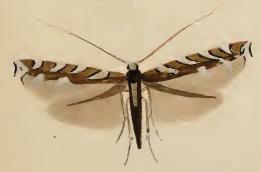
Boraginaceae, the borage or forget-me-notfamily, includes about 2,000 species of shrubs, trees and herbs in 146 genera with a worldwide distribution.

Symphytum is a genus of flowering plants in the borage family, Boraginaceae. There are up to 35 species, known by the common name comfrey. Some species and hybrids, particularly S. officinale and S. × uplandicum, are used in gardening and herbal medicine. They are not to be confused with Cynoglossum virginianum, known as wild comfrey, another member of the borage family.

Pennisetum is a widespread genus of plants in the grass family, native to tropical and warm temperate regions of the world. They are known commonly as fountaingrasses. Pennisetum is considered a synonym of Cenchrus in Kew's Plants of the World Online.

Papaver orientale, the Oriental poppy, is a perennial flowering plant native to the Caucasus, northeastern Turkey, and northern Iran.

The Pontifical Oriental Institute (Orientale), is a Catholic institution of higher education located in Rome. The plan of creating a school of higher learning for Eastern Christianity had been on the agenda of the Catholic Church since at least Pope Leo XIII, but it was only realized in 1917 by Pope Benedict XV (1914-1921). The Orientale forms part of the consortium of the Pontifical Gregorian University and the Pontifical Biblical Institute, both in Rome. All three institutions are run by the Society of Jesus (Jesuits). While the Orientale depends on the Holy See, its management is entrusted to the Society of Jesus. Its Chancellor is the Prefect of the Congregation for the Eastern Churches and its Vice-chancellor is the Superior General of the Society of Jesus, while the Congregation for Catholic Education is the dicastery competent for approving the academic programmes of the Orientale.

Symphytum caucasicum, the beinwell, blue comfrey, or Caucasian comfrey, is an ornamental plant of genus Symphytum in the family Boraginaceae, which is native to the Caucasus.

Allium nigrum, common name black garlic, broad-leaved leek, or broadleaf garlic, is a Middle Eastern species of wild onion. It lacks the onion or garlic scent shared by most of the other species in the group. The species is native to Turkey, Cyprus, Syria, Lebanon, and Israel but cultivated as an ornamental in many other places. It has become naturalized in some regions, including parts of the United States.

Symphytum asperum is a flowering plant of the genus Symphytum in the family Boraginaceae. Common names include rough comfrey and prickly comfrey. It is native to Asia and it is known in Europe and North America as an introduced species and sometimes a weed.

Ethmia bipunctella is a diurnal moth from the family Depressariidae. It can be found in Central and Southern Europe, North Africa, Asia and the northeastern part of North America. E. iranella was formerly included here as a subspecies.

Ethmia quadrillella is a moth belonging to the family Depressariidae, subfamily Ethmiinae.

Symphytum officinale is a perennial flowering plant in the family Boraginaceae. Along with thirty four other species of Symphytum, it is known as comfrey. To differentiate it from other members of the genus Symphytum, this species is known as common comfrey or true comfrey. Other English names include Quaker comfrey, cultivated comfrey, boneset, knitbone, consound, and slippery-root. It is native to Europe, growing in damp, grassy places. It is locally frequent throughout Ireland and Britain on river banks and ditches. It occurs elsewhere, including North America, as an introduced species and sometimes a weed. The flowers are mostly visited by bumblebees. Internal or long-term topical use of comfrey is discouraged due to its strong potential to cause liver toxicity.

Udea olivalis is a species of moth of the family Crambidae. It was first described by Michael Denis and Ignaz Schiffermüller in 1775 and is found in Europe.

The jardin des plantes de Montpellier is a historic botanical garden and arboretum located on Boulevard Henri IV, Montpellier, Hérault, Languedoc-Roussillon, France. It is maintained by the Université Montpellier 1 and open afternoons daily except Monday; admission is free.

Symphytum tuberosum, the tuberous comfrey, is a species of Symphytum in the family Boraginaceae.

Poison ivy is an allergenic plant in the genus Toxicodendron native to Asia and North America. It is well known for causing urushiol-induced contact dermatitis, an itchy, irritating, and sometimes painful rash, in most people who touch it. The rash is caused by urushiol, a clear liquid compound in the plant's sap. The plant is variable in its appearance and habit, and despite its common name, it is not a true ivy (Hedera), but rather a member of the cashew and pistachio family (Anacardiaceae). T. radicans is commonly eaten by many animals, and the seeds are consumed by birds, but poison ivy is most often thought of as an unwelcome weed. Poison ivy was formerly treated as a single species, Toxicodendron radicans, but is now generally treated as a complex of three separate species: Toxicodendron radicans, Toxicodendron rydbergii and Toxicodendron orientale.

Dialectica imperialella is a moth of the family Gracillariidae. It is found from Denmark to the Pyrenees, Italy and Romania and from Great Britain to Russia and Ukraine.

Symphytum bulbosum, common name bulbous comfrey, is a flowering plant of the genus Symphytum in the family Boraginaceae.

Clayfield Copse is a local nature reserve on the northern edge of the suburb of Caversham in Reading, UK. The site is 8.65 hectares in size and is a natural open space consisting of fields, wild flower meadow and native woodlands adjoining the Oxfordshire countryside. Some of the woodland is being actively managed as hazel coppice, and traditional dead hedging defines some of the ancient woodland areas. The site is the only outcrop of London Clay north of the River Thames in Reading and makes up the southern tip of the Chiltern Hills. The nature reserve is under the management of the Reading Borough Council.

Persicaria orientalis is a species of flowering plant in the family Polygonaceae, known as kiss-me-over-the-garden-gate and princess-feather. It was first described, as Polygonum orientale, by Carl Linnaeus in 1753. It was transferred to the genus Persicaria by Édouard Spach in 1841. Its native distribution is unclear. As of May 2019, Plants of the World Online lists only Uzbekistan, whereas other sources give a much wider distribution in temperate and tropical Asia and Australia. It is widely cultivated and naturalized.

Allium orientale is a species of wild garlic/onion native to the eastern Mediterranean; Libya, Egypt, Sinai, the Levant, Cyprus and Anatolia. It has high genetic variation but is not widely distributed, suggesting that it may contain cryptic species.


















